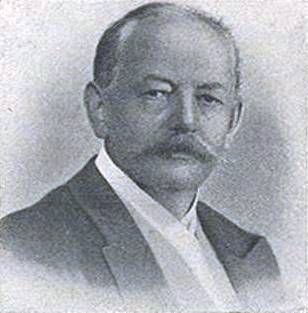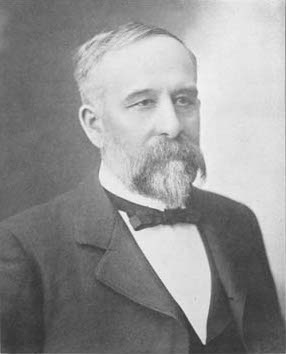
Henry Chandler Cowles was an American botanist and ecological pioneer. A professor at the University of Chicago, he studied ecological succession in the Indiana Dunes of Northwest Indiana. This led to efforts to preserve the Indiana Dunes. One of Cowles' students, O. D. Frank continued his research.

Johann Müller was a Swiss botanist who was a specialist in lichens. He published under the name Johannes Müller Argoviensis to distinguish himself from other naturalists with similar names.
The Botanical Research Institute of Texas (BRIT) is a botanical research institute located in Fort Worth, Texas, United States. It was established in 1987 for the herbarium and botanical library collections of Lloyd H. Shinners from Southern Methodist University but has subsequently expanded substantially. BRIT focuses on plant taxonomy, conservation and knowledge sharing for both scientists and the general public

Heinrich Gustav Adolf Engler was a German botanist. He is notable for his work on plant taxonomy and phytogeography, such as Die natürlichen Pflanzenfamilien, edited with Karl A. E. von Prantl.

Charles Joseph Chamberlain, Ph.D. was an American botanist, born near Sullivan, Ohio, and educated at Oberlin College and at the University of Chicago, where he earned the first Ph.D. in that institution's botany department, and where he was a long-time employee, becoming associate professor in 1911. He is known for pioneering the use of zoological techniques on the study of plants, particularly in the realm of microscopic studies of tissues and cells; his specialty was the cycad. He made contributions to the Botanical Gazette, and was the author of Methods in Plant Histology (1901) and The Morphology of Angiosperms (1903). In collaboration with John M. Coulter, he wrote The Morphology of Gymnosperms (1910).

John Merle Coulter, Ph. D. was an American botanist and educator. In his career in education administration, Coulter is notable for serving as the president of Indiana University and Lake Forest College and the head of the Department of Botany at the University of Chicago.

William Thomas Stearn was a British botanist. Born in Cambridge in 1911, he was largely self-educated and developed an early interest in books and natural history. His initial work experience was at a Cambridge bookshop, but he also had a position as an assistant in the university botany department. At the age of 29 he married Eldwyth Ruth Alford, who later became his collaborator, and he died in London in 2001.

Charles Edwin Bessey was an American botanist.

Elmer Drew Merrill was an American botanist and taxonomist. He spent more than twenty years in the Philippines where he became a recognized authority on the flora of the Asia-Pacific region. Through the course of his career he authored nearly 500 publications, described approximately 3,000 new plant species, and amassed over one million herbarium specimens. In addition to his scientific work he was an accomplished administrator, college dean, university professor and editor of scientific journals.
William C Carruthers was a Scottish botanist and paleobotanist.

Edward Lee Greene was an American botanist known for his numerous publications including the two-part Landmarks of Botanical History and the describing of over 4,400 species of plants in the American West.

William Russel Dudley was an American botanist. He headed the botany department at Stanford University from 1892 to 1911. His collection built at Stanford is considered to be one of the most important contributions to knowledge of the flora of California. This became the nucleus of what is now known as the Dudley Herbarium.
Sidney Fay Blake (1892–1959) was an American botanist and plant taxonomist, "recognized as one of the world's experts on botanical nomenclature."
Henry Hurd Rusby (1855–1940) was an American botanist, pharmacist and explorer. He discovered several new species of plants and played a significant role in founding the New York Botanical Garden and developing research and exploration programs at the institution. He helped to establish the field of economic botany, and left a collection of research and published works in botany and pharmacology.
George Hill Mathewson Lawrence was an American botanist, writer and professor of botany who helped establish the 'Liberty Hyde Bailey Hortorium', the Hunt Botanical Library and the Huntia journal. He was also an avid book collector, including books on the history of Rhode Island, historic books and botanical art.

Emily Lovira Gregory (1840–1897) was an American botanist born in Portage, New York. She began her educational career by receiving her Bachelor's of Arts from Cornell University in 1881, later earning a Ph.D. at the University of Zurich. This made her one of the first American women to earn a doctoral degree from a university in Europe. Gregory often found it difficult to find paid academic positions. She often would take on the unpaid positions because she could support herself. From 1890 to 1895 at the University of Pennsylvania and Barnard College she worked as a teaching fellow and lecturer respectively. Gregory was the first woman elected to the American Society of Naturalists in 1886.

Charles Reid Barnes (1858–1910) was an American botanist specializing in bryophytes. He was co-editor of the Botanical Gazette for over 25 years.

Josephine Adelaide Clark was an American teacher, librarian, and botanist. She was the head librarian of the United States Department of Agriculture from 1901 to 1907. Clark was a part of the second class to graduate from Smith College in 1880 and she conceived the idea of publishing a card index of new genera and species of American plants, which was continued at the Gray Herbarium.
Warren Lambert Wagner is an American botanist, a curator of botany, and a leading expert on Onagraceae and plants of the Pacific Islands, especially plants of the Hawaiian Islands.
Theodore Christian Frye was an American botany professor and one of the world's leading experts on bryology.













